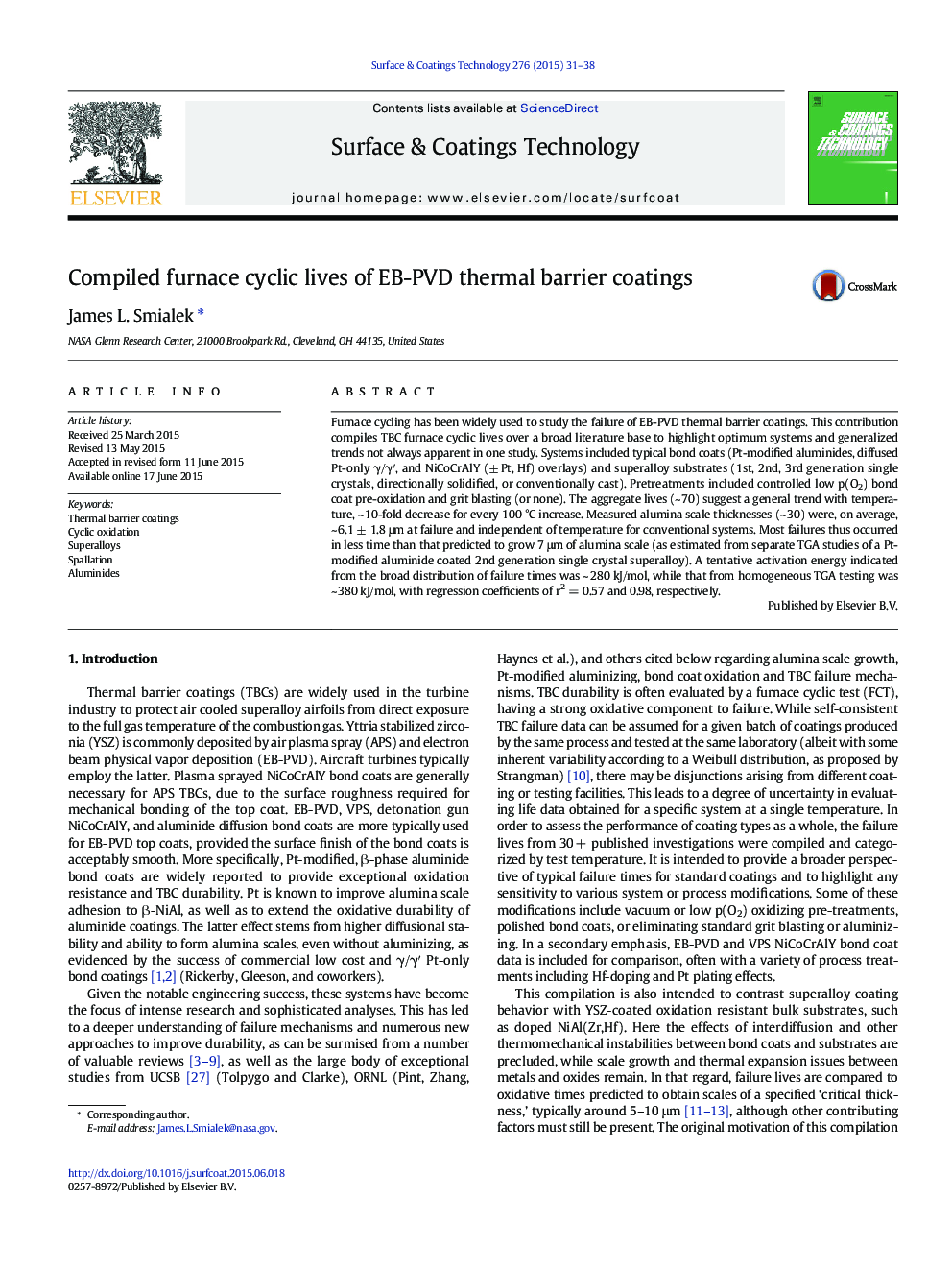| Article ID | Journal | Published Year | Pages | File Type |
|---|---|---|---|---|
| 1656953 | Surface and Coatings Technology | 2015 | 8 Pages |
•Sixty EB-PVD TBC furnace cycle lives were compiled from the literature.•Overall behavior indicates 10-fold life reduction every 100 °C.•Few coatings survive when scales are ≥ 7 μm.•Exceptional TBC life for bulk NiAl(Zr,Hf) and pre-oxidized Pt–Al bond coats
Furnace cycling has been widely used to study the failure of EB-PVD thermal barrier coatings. This contribution compiles TBC furnace cyclic lives over a broad literature base to highlight optimum systems and generalized trends not always apparent in one study. Systems included typical bond coats (Pt-modified aluminides, diffused Pt-only γ/γ′, and NiCoCrAlY (± Pt, Hf) overlays) and superalloy substrates (1st, 2nd, 3rd generation single crystals, directionally solidified, or conventionally cast). Pretreatments included controlled low p(O2) bond coat pre-oxidation and grit blasting (or none). The aggregate lives (~ 70) suggest a general trend with temperature, ~ 10-fold decrease for every 100 °C increase. Measured alumina scale thicknesses (~ 30) were, on average, ~ 6.1 ± 1.8 μm at failure and independent of temperature for conventional systems. Most failures thus occurred in less time than that predicted to grow 7 μm of alumina scale (as estimated from separate TGA studies of a Pt-modified aluminide coated 2nd generation single crystal superalloy). A tentative activation energy indicated from the broad distribution of failure times was ~ 280 kJ/mol, while that from homogeneous TGA testing was ~ 380 kJ/mol, with regression coefficients of r2 = 0.57 and 0.98, respectively.
